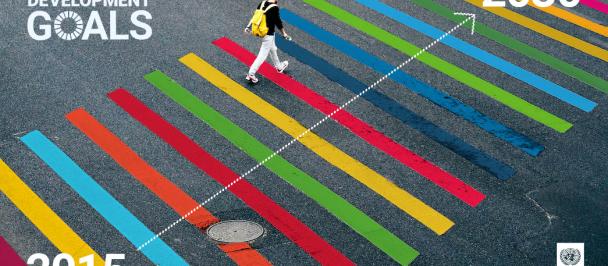Image from Skillcast
This is a series of blog posts on The Role of Bystander which aims to share what we, as individuals and as a community, can do to eliminate Gender Based Violence and Femicide (GBVF) and how to do so effectively. Part one of this series aims to highlight on ways to intervene during different stages of violence while part two will delve on how an effective and holistic intervention would look like.
The COVID-19 epidemic poses new obstacles to GBVF prevention as lockdown and social distancing isolate the victims at home with their abusers, away from their friends and family. Often, violence against women happens with onlookers who observe or acknowledge the abuse. In other words, there are many chances to prevent and mitigate violence from happening or escalating
In November 2020, United Nations Development Programme (UNDP) South Africa, in partnership with United Nations Women and National Community Radio Forum (NCRF), launched a five days national radio campaign to increase awareness on Gender-Based Violence and Femicide (GBVF) and to encourage active bystanderism. As part of the 16 days of activism against violence on women and children, the UNDP fostered community discussions on the role of bystanders.
The Role of Bystander
Before we dive into what bystanders can do, let’s go over what “bystander” means. A bystander is an observer of violence or other aggressive behavior. In contrast to the passive term, an active or prosocial bystander means someone who actively intervenes in the incident.[1] Generally, we think bystanders are individuals but bystanders can also be collective agents that shape societies’ norms and culture. Engaging bystanders can increase community awareness of the scourge of violence in our society and galvanize everyone to be involved more actively throughout the different stages of violence.
Primary Prevention: before the violence occurs
We, as bystanders, can prevent violence from occurring by stepping in and calling out assaultive behaviors. By setting standards for what is acceptable and what is not, we can help others to recognise when their comment or behavior is offensive and intolerable. For example, we can respond to inappropriate comments by saying “Are you hearing what I am hearing?”, “I can’t be the only one who thinks this is not OK”, or “I know you’re a better person than that.”[2] By doing so, we can bring out attention to the situation and put peer pressure on the perpetrator to stop.
Secondary Prevention: Immediate response after violence
Most victims who experience violence tend to not report or seek any sort of help from others immediately. However, the victims generally find disclosing their experience to someone close more approachable. As someone’s close friend, family member, coworker, and neighbor, we can be the victims’ go-to resource and support. As the first responders, we can support the victim emotionally by reassuring them that this is not their fault and they can rely on us. We can also refer the victim to someone who they would feel comfortable with or to the resources like GBV Command Center or shelter for domestic violence victims.[3]
Tertiary Prevention: a lasting consequence of violence
On the global average, a victim of domestic violence experiences assaults 35 times before reaching out to the police.[4] The victim may not report the assault because they are humiliated, they fear revenge, and they are financially dependent on their perpetrator. GBV has the ability to create a personal conflict and can shamefully drive the victim to internalize and normalise their experience, thus prolong their exposure to violence. In this case, we can provide emotional support to the survivor to ensure that they no longer go back to their abusive partner or to trap themselves in shame and guilt. Further, we can foster conversation on active bystanderism in our communities and continue to advocate for a stigma-free society by challenging bias and stereotypes against GBV.
Bystander intervention is inclusive and effective because it gives everyone a role to play in reducing abuse and actively changing the culture. With the rising trend of violence against women during COVID-19, active bystanders are needed more than ever. GBV is not an isolated, incidental, or private matter but it is a societal problem that needs societal effort. It will take involvement and understanding of everyone in society to break the cycle of violence and diminish the factors that feed into GBV.
**************
If you are experiencing Gender-Based Violence (Emotional, Physical, Sexual, Financial Abuse) and seeking support, you can reach out to:
- South African Police Service (dial 10111)
- People Opposed to Women Abuse provides counseling, shelter, and legal assistance
- http://www.powa.co.za
- Lockdown Counseling Number: 076 694 5911 (counselor available from 8:30-16:30 Mon thru Sun)
- itumeleng@powa.co.za
- Thutuzela Care Centres are located in hospitals for rape survivors and provide medical help, counseling, and reporting the rape
- https://www.healthsites.org.za/ to find the nearest Thuthuzela Care Centre.
- Gender-Based Violence Command Centre is a nationwide 24/7 helpline for GBV victims.
- Toll-free call: 0800 428 428
- Skype: ‘Helpme GBV’ for the deaf community
- SMS line: 31531 for people with disability (SMS ‘help’ to 31531)
The help is out there, reach out and refer your friend, family, or neighbor who is suffering from GBV.
Reference
[1] VicHealth, Review of bystander approaches in support of preventing violence against women, 8.
[2] NSVRP, “Bystander Intervention Tips and Strategies”
[3] RAINN, “Tips for Talking with Survivors of Sexual Assault.”
[4] Victim Support, Domestic Violence.

 Locations
Locations




